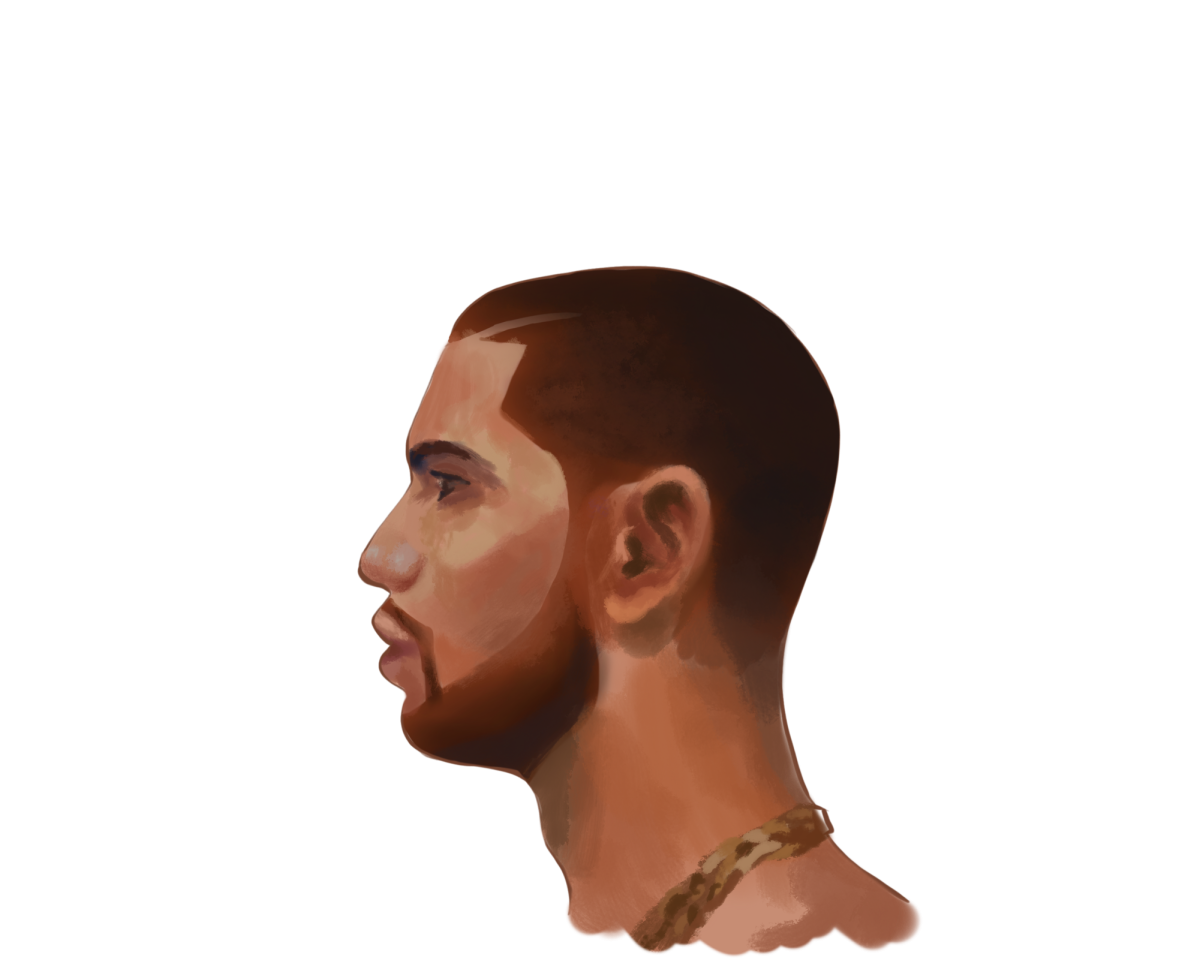It’s business as usual for Aubrey Drake Graham. The Canadian rapper, singer and former child actor, known mononymously by his middle name, Drake, enters 2025 with more of the same — slipper-throwing in Australia, sneak-dissing Lebron James and, of course, releasing an hour-long collab album with a trusty associate. This time, it’s February’s “$ome $exy $ongs 4U,” which sees him trade former album partners Future (“What a Time to be Alive”) and 21 Savage (“Her Loss”) for fellow Canadian and labelmate PartyNextDoor.
In a decade marked so far by volatility and unpredictability, the notion that no matter what Drake’s still out there doing what he’s always done — the memes, the persona, the R&B-fused rap music — is almost comforting. If there is one constant in the 2020s culture zeitgeist, it is the self-described Champagne Papi — corniness and all. Some things just don’t change.
But something HAS changed, and after nine diss tracks, accusations of pedophilia and an impending lawsuit, it’s more apparent than ever before.
All throughout his career, Drake has seemed impervious to destruction, riding through controversy after controversy unscathed— from ghostwriting allegations to a secret baby, nothing has been able to dent his stardom.
This time feels different. From the attacks on his carefully cultivated image to the darker implications cast on his character, Drake’s beef with fellow rap artist Kendrick Lamar has left its mark. His reputation tainted, his numbers trending downward, and his music quality made a mockery of — there’s never been a worse time to be Drake.
If the Canadian is bothered by any of that, he doesn’t show it on “$ome $exy $ongs 4U.” Anyone expecting self-reflection from Drake on the past year’s events is setting themselves up for failure. He is as boisterous and lustful as ever before, splitting time flexing his luxurious lifestyle (“Glorious”) and chasing after Instagram models fresh out of relationships (“When He’s Gone”).
True to his trend-conscious reputation, Drake references many celebrities on the new project, from popstars Charli XCX and Tate McRae to Young Thug’s lawyer, Brian Steel — everyone, that is, except for a certain 5-foot-5-inch Los Angeles rapper. Outside of ambiguous potshots on “Gimme a Hug” there’s a notable Kendrick-Lamar-sized hole in the entire project the industry veteran doesn’t even bother to address.
Sonically, “$ome $exy $ongs 4U” sees Drake return to the slow-paced, patient, Caribbean-influenced R&B of 2016’s “Views,” abandoning his previous musical iteration — the abrasive Yeat-fueled rage rap of 2023’s “For All the Dogs” — for the sound that brought him the most success. It’s another evolutionary (or, in this case, devolutionary?) step for a man more chameleon than human. A man willing to dabble in anything — from reggaeton to house music to afrobeats — as long as his music retains a certain Drake-ness to it.
The end result is sub-satisfactory, yet sufficient. Drake knows what he does well, and does not shy away from flexing his strengths. Atmospheric beats from his long-time producer, Noah James “40” Shebib paint a lush, urban Toronto-esque backdrop for his vocals, which, as always, are autotuned to the sugary, pained-90’s-R&B-singer perfection he demands. “Nokia” is an obvious standout, with Drake shelving aside the unhurried cadence of the rest of the album for a high-tempo dance track exploring the rapper’s party exploits. It’s all so … Drake.
Almost too Drake, actually. While the album’s technically a collaborative effort, PartyNextDoor’s contributions pale in comparison to Drake’s, having only one solo track, “Deeper,” to the other rapper’s six (“Crying in Chanel,” “Small Town Fame,” “Brian Steel,” “Gimme a Hug,” “Raining in Houston” and “Nokia”). Even in songs where both feature, the smaller artist offers little more than brief adlibs and bridges.
It is a fitting role for a musician who has, since signing to Drake’s label, OVO, in 2013, been largely regulated to the infamous “OVO sweatshop,” ghostwriting hit songs for bigger artists (Rihanna’s “Work” and “Wild Thoughts”) at the expense of his own solo career.
But even with his limited appearances, PartyNextDoor makes his mark on the album. His energetic, high-pitched vocals provide a sharp, welcoming contrast to Drake’s restrained drawls, switching the tune up when his mentor becomes too monotonous.
This is perhaps best exemplified in tracks like “Die Trying” and “When He’s Gone,” where vibrant, if brief segments from the R&B singer elevate otherwise bland Drake tracks to replayability.
For Palo Alto junior Naveen Narayanaswami, while “$ome $exy $ongs 4U” may not be Drake’s magnum opus, it nonetheless holds up on its own.
“I don’t think it was one of his best albums purely because some of the albums he’s put out in the past like ‘Take Care’ and ‘Views’ have been sensational, but the album overall was really good,” Narayanaswami said. “I liked the way him and PND [PartyNextDoor] worked together. It was definitely different from some of his more recent albums, but nonetheless I thought it had versatility and variety.”
I agree.





